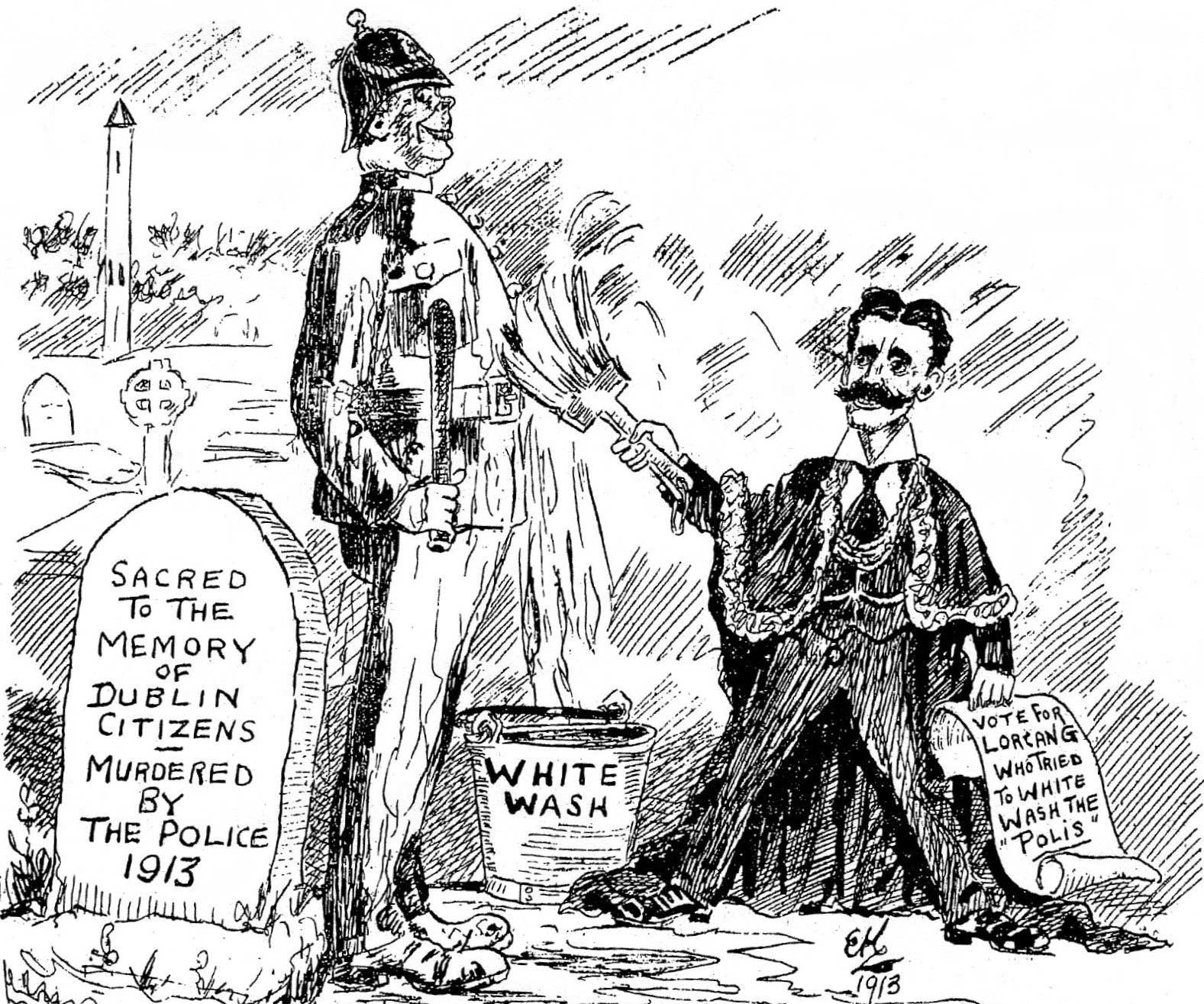245 police injured during Lockout disturbances
Priest says police only redeeming feature of a ‘disgusting spectacle’
The Commission of Inquiry into the behaviour of the police during the Lockout was told today that 245 policemen were injured in the disturbances that took place between August and November.
The commission also heard that while the disturbances were at their height, 101 people were imprisoned and a further 78 people were fined.
The figures were released as the commission was once again given conflicting accounts of the behaviour of the police in Dublin.
A series of witnesses told the inquiry in the Four Courts that the police had rushed into their houses and destroyed furniture and delph, and broken windows.
One witness, Kate Johnson, a tenant of Corporation Buildings, gave an account of the police ransacking her flat. She claimed they broke two pictures and a mirror, overturned beds and smashed her only chair into splinters.
Evidence was also provided to the inquiry of policemen assaulting men and women, with one witness, Mary Lennon, telling of how her daughter was dragged out of their flat by the hair.

During quieter times: a policeman standing by a tram at the junction of Nassau Street and Grafton Street. The behaviour of the police during the recent labour unrest has been called into question, prompting the establishment of a Commission of Inquiry. (Photo: National Library of Ireland, CLAR 62)
By contrast, in his evidence to the commission, Sir John Ross, the Commissioner of Police, said that the Dublin strikes had been characterised by violence and intimidation, not least because of the involvement of the ‘hooligan element'.
He continued by saying that the actions of the police were motivated by a high sense of duty and responsibility, and his experience led him to believe that they were anxious to avoid conflict when they could do so.
In support of his claims, he read to the commission a letter he had received from a Catholic priest, Fr. Michael Curran, who wrote from the Archbishop’s House in Dublin. Fr. Curran described the threats issued against police as coming from people of a ‘degraded class’, who behaved like ‘frenzied lunatics'. He continued: ‘The women indeed almost eclipsed the men with their wild cries, shaking their fists in the very faces of the constables, hitting them on the back and pulling them and their prisoners about.’
Referring to the reaction of the police, Fr. Curran said they ‘behaved with singular self-restraint, and in some cases with actual good humour. There was an absence of violence on their part, except in the last instance, when they only employed such force as was necessary to secure and retain their prisoners.’
Fr. Curran concluded: ‘Their behaviour was the only redeeming feature of what was for a Dublin citizen a really humiliating and disgusting spectacle.’





















